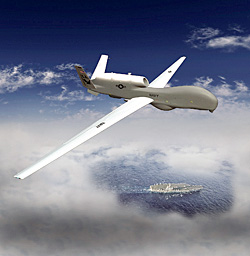INDIAN ARMED FORCES CHIEFS ON OUR RELENTLESS AND FOCUSED PUBLISHING EFFORTS

The insightful articles, inspiring narrations and analytical perspectives presented by the Editorial Team, establish an alluring connect with the reader. My compliments and best wishes to SP Guide Publications.

"Over the past 60 years, the growth of SP Guide Publications has mirrored the rising stature of Indian Navy. Its well-researched and informative magazines on Defence and Aerospace sector have served to shape an educated opinion of our military personnel, policy makers and the public alike. I wish SP's Publication team continued success, fair winds and following seas in all future endeavour!"

Since, its inception in 1964, SP Guide Publications has consistently demonstrated commitment to high-quality journalism in the aerospace and defence sectors, earning a well-deserved reputation as Asia's largest media house in this domain. I wish SP Guide Publications continued success in its pursuit of excellence.
- Indian Air Force Aims for Full Indigenous Inventory by 2047 — Air Chief Marshal A.P. Singh
- General Upendra Dwivedi takes over as the Chief of the Army Staff
- Rajnath Singh assumes charge as Defence Minister for the second consecutive term
- Admiral Dinesh K. Tripathi assumes Command of the Indian Navy as 26th Chief of the Naval Staff
- Prime Minister witnesses 'Bharat Shakti' – a Tri-Services Firing and Manoeuvre Exercise in Pokhran, Rajasthan
Navy’s customised RQ-4 Global Hawk in action

Two years after extensive tests in Middle East, the US Navy’s customised RQ-4 Global Hawk UAV is now operating with a carrier task force at sea. This navy version of the US Air Force RQ-4 is called BAMS (Broad Area Maritime Surveillance). Circling above the task force, at 22,500 metres (70,000 feet), BAMS is monitoring sea traffic off the Iranian coast and the Straits of Hormuz. Anything suspicious is checked out carrier or land based aircraft, or nearby warships. The BAMS aircraft fly a 24-hour sortie every three days. The first production BAMS will be available in six months, and these models will begin entering service in three years.
The navy plans to buy 20 BAMS and 117 P-8As to replace 250 P-3Cs. This replacement is supposed to be complete in about a decade. The new surveillance aircraft provide more information over a wider area.
The US Air Force and Navy are buying the B version of the RQ-4 Global Hawk UAVs at a cost of over $60 million each. This version is larger (wingspan is 5 metres/15 feet larger, at 42.2 metres/131 feet, and it’s nine per cent longer at 15.5 metres/48 feet) than the A model, and can carry more equipment. To support that, there’s a new generator that produces 150 per cent more electrical power. The RQ-4 has a range of over 22,000 kilometres and a cruising speed of 650 kilometres an hour.





